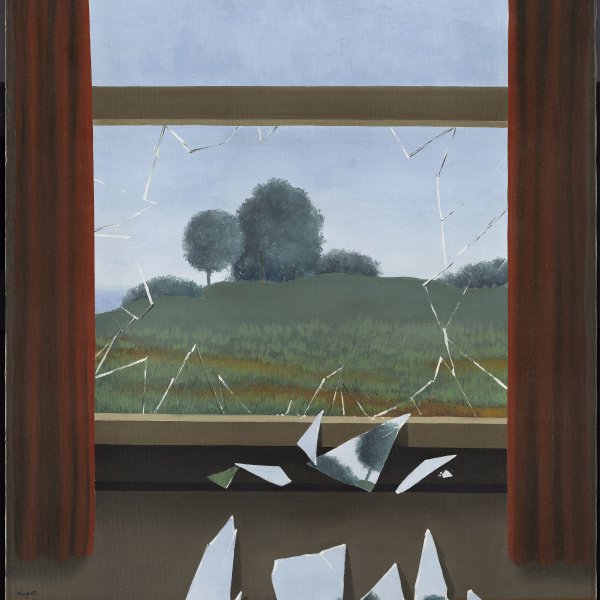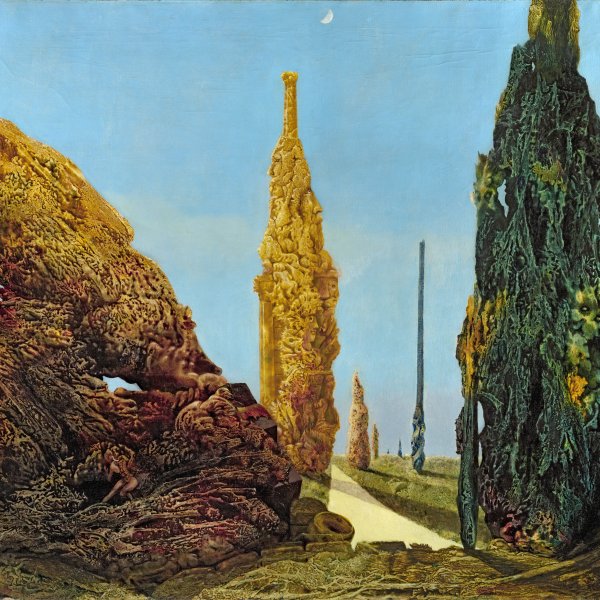Woman in the Mirror
Delvaux’s Woman in the Mirror, which according to Suzanne Houbart-Wilkin was painted at the end of 1936, repeats a frequent composition in the painter’s output: a nude female figure before a mirror. The symbolism of the mirror is a common allegorical device in the history of western painting and for Delvaux, as Konrad Schreumann stated, “the mirror is the source of knowledge, the instrument that reveals to us our conscience.” Furthermore, as Barbara Emerson noted, the young woman in the painting does not gaze at the mirror, yet the image of her own face reflected in the mirror, with a strip of lace draped around it, stares at the woman. That is, both women are real beings, as each has a gaze of her own. For Delvaux the mirror is thus a manner of opening up the imagination to a world that is more realistic than reality itself.
The mysterious painting of this Belgian Surrealist, which comes close to magical realism, is based on Mannerist and Baroque painting and on the literary symbolism of Gustave Moreau. Added to this is the mark left on him by the metaphysical painting of De Chirico and the enigmatic Surrealism of his compatriot René Magritte, with whom he shares the deliberately incongruent association of different objects and people in the picture to provoke certain psychological effects. The enigmatic women who appear in Delvaux’s works, infused with metaphors that are sometimes difficult to interpret, generally have the appearance of sphinxes, nymphs or sylphs, in compositions with a veiled eroticism. Christopher Green relates this depiction of the Woman in the Mirror to the myth of Oedipus and the sphinx, especially to Ingres’s treatment of the theme in his painting in the Louvre, which is also set in a dark grotto. In the present painting the exaggerated perspective view and the phallic form of the cave’s opening have also been interpreted erotically.
Paloma Alarcó









